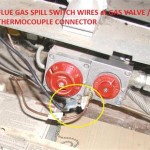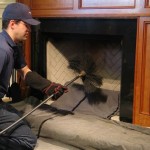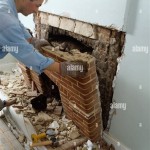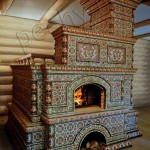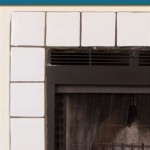Installing a Gas Fireplace: A Comprehensive Guide
A gas fireplace offers a convenient and efficient alternative to traditional wood-burning fireplaces. Providing warmth and ambiance with the flick of a switch, gas fireplaces eliminate the need for wood storage, chopping, and cleanup. However, the installation of a gas fireplace is a complex process that requires careful planning, adherence to safety regulations, and often, professional expertise. This article provides a comprehensive overview of the key considerations and steps involved in installing a gas fireplace.
Prior to embarking on the installation process, it is crucial to assess the suitability of the existing structure. This assessment includes evaluating the structural integrity of the fireplace surround, chimney, and any potential gas line connections. A qualified professional can perform a thorough inspection to identify any pre-existing issues that may require remediation before installation commences. This proactive approach helps prevent complications and ensures a safe and efficient installation.
Local building codes and regulations govern the installation of gas appliances. These codes are designed to ensure safety and prevent potential hazards associated with natural gas or propane systems. It is imperative to research and understand the specific requirements applicable to the installation location. This may involve obtaining permits, adhering to setback requirements, and ensuring proper ventilation. Failure to comply with local regulations can result in fines, delays, and potentially hazardous conditions.
The selection of a gas fireplace is a crucial step in the installation process. Gas fireplaces are available in a variety of styles, sizes, and heat output capacities. Factors to consider when selecting a fireplace include the size of the room, the desired aesthetic, and the primary purpose of the fireplace. Direct vent fireplaces, for example, vent directly to the outside, while vent-free fireplaces do not require a chimney. Each type has its own advantages and disadvantages, and the selection should be based on the specific needs and limitations of the installation location.
Understanding Gas Fireplace Types and Venting Options
Gas fireplaces are categorized primarily by their venting system. The venting system plays a crucial role in safely removing combustion byproducts from the home. Selecting the appropriate venting system is essential for both performance and safety.
Direct Vent Fireplaces: Direct vent fireplaces are sealed combustion units that draw air from the outside for combustion and vent exhaust gases directly to the outside through a coaxial or co-linear vent system. This type of fireplace is considered the safest and most efficient option, as it prevents indoor air from being used for combustion and eliminates the risk of backdrafting. Direct vent fireplaces can be installed in a variety of locations, including exterior walls and even through the roof.
B-Vent Fireplaces: B-vent fireplaces utilize existing chimneys to vent exhaust gases. They draw combustion air from the room and rely on natural draft to vent the exhaust. B-vent fireplaces are typically less efficient than direct vent models and require a functional chimney in good condition. The chimney must be properly sized to accommodate the fireplace's vent requirements. Regular inspection and maintenance of the chimney are essential to ensure safe and efficient operation.
Vent-Free Fireplaces: Vent-free fireplaces, also known as ventless fireplaces, do not require a chimney or vent. They burn with high efficiency, converting nearly all of the fuel into heat. However, vent-free fireplaces release combustion byproducts, including carbon dioxide and water vapor, into the room. For this reason, they are subject to strict safety regulations and are typically equipped with oxygen depletion sensors (ODS) that shut off the gas supply if oxygen levels fall too low. Vent-free fireplaces are often used as supplemental heating sources in well-ventilated rooms.
Each venting option presents unique installation considerations. Direct vent systems require proper sealing and penetration of exterior walls. B-vent systems necessitate chimney inspection and potentially relining. Vent-free systems demand careful consideration of room size and ventilation.
Preparing the Installation Site
Once the gas fireplace type is selected, preparing the installation site is the next critical step. This involves several key tasks, including clearing the area, ensuring proper clearances, and potentially modifying the existing structure.
Clearing the Area: The installation site must be cleared of any combustible materials, such as furniture, curtains, and paper products. A safe working area is essential to prevent accidents and ensure proper installation. The manufacturer's instructions typically specify the minimum clearance requirements for combustible materials. Adhering to these clearances is crucial for fire safety.
Ensuring Proper Clearances: Gas fireplaces generate significant heat, and it is essential to maintain adequate clearances from surrounding walls, ceilings, and floors. The manufacturer's specifications outline the required clearances for each model. These clearances are designed to prevent overheating and potential fire hazards. In some cases, non-combustible materials, such as tile or brick, may be used to reduce clearance requirements.
Structural Modifications: Depending on the type of gas fireplace and the existing structure, structural modifications may be necessary. This could involve framing alterations, chimney modifications, or the creation of a new vent opening. Structural modifications should be performed by qualified professionals to ensure that the structural integrity of the building is maintained.
Gas Line Installation: If a gas line is not already present at the installation site, a qualified plumber or gas fitter must install one. Gas line installation requires specialized knowledge and expertise to ensure safe and leak-free connections. The gas line must be properly sized to provide adequate gas flow to the fireplace. All gas connections must be tested for leaks using a soap solution or electronic leak detector.
Electrical Connections: Many gas fireplaces require electrical connections for controls, fans, and lighting. A qualified electrician should perform all electrical work, ensuring compliance with local electrical codes. Proper grounding and wiring are essential for safety and reliable operation.
Prior to commencing the installation, it is advisable to consult with a qualified professional to assess the installation site and identify any potential challenges or requirements. This proactive approach can help prevent costly errors and ensure a safe and successful installation.
Installation Procedures and Safety Precautions
The actual installation of the gas fireplace involves a series of steps that must be followed meticulously to ensure proper operation and safety. Following the manufacturer's instructions is paramount, as they provide specific guidance for each model.
Fireplace Placement and Securing: The fireplace must be positioned according to the manufacturer's instructions, ensuring that it is level and properly aligned. It should be securely fastened to the floor or wall using appropriate hardware. Improper placement can lead to instability and potential hazards.
Venting System Installation: The venting system must be installed according to the manufacturer's specifications, ensuring proper connections and sealing. Direct vent systems require precise alignment and sealing of vent pipes to prevent leaks. B-vent systems require proper chimney connection and draft testing. Vent-free systems require careful consideration of room size and ventilation.
Gas Line Connection: The gas line must be connected to the fireplace using approved fittings and sealants. All gas connections must be tested for leaks using a soap solution or electronic leak detector. Any leaks must be addressed immediately.
Electrical Connections: Electrical connections must be made according to the manufacturer's instructions and local electrical codes. Proper grounding and wiring are essential for safety and reliable operation.
Testing and Calibration: After installation, the gas fireplace must be thoroughly tested to ensure proper operation. This includes checking the ignition system, flame pattern, and venting system. The fireplace may require calibration to achieve optimal performance and efficiency.
Carbon Monoxide Detectors: Carbon monoxide (CO) detectors should be installed in the vicinity of the gas fireplace to provide an early warning of CO buildup. CO is a colorless, odorless gas that can be deadly. Regular testing and maintenance of CO detectors are essential.
Safety Precautions: Throughout the installation process, it is crucial to adhere to strict safety precautions. This includes wearing appropriate personal protective equipment (PPE), such as gloves and safety glasses. Working in a well-ventilated area is essential to prevent the buildup of gas fumes. If any gas leaks are detected, the gas supply must be shut off immediately, and a qualified gas fitter must be called.
The installation of a gas fireplace is a complex task that requires careful planning, adherence to safety regulations, and often, professional expertise. By understanding the key considerations and steps involved, homeowners can ensure a safe, efficient, and aesthetically pleasing installation. Consulting with qualified professionals, such as plumbers, gas fitters, and electricians, is highly recommended to ensure compliance with local codes and regulations and to prevent potential hazards.

Fireplace Installations Near Dc Chimney Experts

Convert To Gas Installing Fireplace Inserts Doctor Flue

Efficient Prefab Gas Fireplaces Fireplace Showroom In Tilton Nh

How To Install A Fireplace Insert Diy Save Money

If You Have A Gas Fireplace It May Or Not Chimney Flue

How To Install A Gas Fireplace Corner Insert
How To Install Gas Fireplace Insert Heat Glo

7 Benefits Of Installing A Gas Fireplace Low Maintenance Much More

How To Select And Install A Gas Fireplace Log Set Fireplaces Direct Learning Center

Install A Propane Gas Fireplace Insert Vent Free 2
Related Posts

